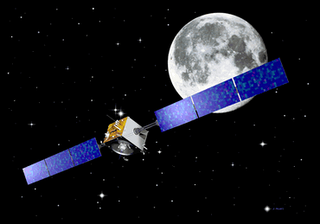Chandrayaan-1, Successfully Enters Moon’s Orbit
 The much applauded first unmanned lunar mission of India Chandrayaan-1, has entered the lunar orbit and will spend the next two years mapping the moon's terrain. This mission has put India in league with the five great nations in space exploration sector, namely US, Russia, Japan and China. The success of the current mission has encouraged scientists to compete with China and Japan to put a man on the Moon by 2025.
The much applauded first unmanned lunar mission of India Chandrayaan-1, has entered the lunar orbit and will spend the next two years mapping the moon's terrain. This mission has put India in league with the five great nations in space exploration sector, namely US, Russia, Japan and China. The success of the current mission has encouraged scientists to compete with China and Japan to put a man on the Moon by 2025.
The path taken by Chandrayaan-I will be reduced in the coming days to achieve a final polar orbit of about 100 kilometers (62 miles) and a probe will be released to hit the lunar surface. Close-range images will be taken during the probe's 25-minute descent.
The spacecraft is also carrying mapping instruments for the European Space Agency, radiation-measuring equipment for the Bulgarian Academy of Sciences and two devices for the National Aeronautics and Space Administration. One of the NASA devices will look for ice deposits on the lunar poles, while the other will assess the moon's mineral composition. In addition, a two-year survey of the lunar crust will begin to search for water, minerals and helium3, an energy source rare on Earth.
India has one of the largest communication systems in the world with a satellite programme of 21 orbiters of which 11 are currently in service. Although Russia has helped in the space programmmes by providing manufacturing and design technology, the credit for the success of Chandrayaan-1 solely belongs to the scientists of India at the Indian Space Research Organization.